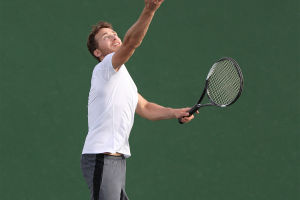At present, the lack of activity among the elderly is more common, which is a public health problem, which may be exacerbated by the increase and aging of the population. Regular physical activity is very important for healthy aging.
What benefits can exercise for the elderly bring to their health?
1. It is obvious that the elderly who exercise regularly look younger than those who do not exercise, and the organ function of the elderly who love exercise is better than those who do not exercise.
This is because exercise speeds up the blood circulation of the elderly and can effectively maintain the function of various organs of the body in relatively good condition.
2. Regular exercise for enough time can improve the myocardial contractile function of the elderly, and improving the myocardial contractile function can effectively promote the enhancement of blood circulation and metabolic function.
3. It is common to see that the elderly become idle after retirement because they do not work. Exercise is a thing that can regulate emotions and increase the fun of life.
A group of elderly people who change from exercise to communication can better improve the adverse psychological factors in the hearts of the elderly, and a hormone secreted during exercise will also make the elderly more relaxed and cheerful.
So which sports are suitable for the elderly?
1. Walk.
When walking, the lower limbs support the body weight, and the bones, joints, and muscles of the upper and lower limbs coordinate with other parts of the body to exercise; at the same time, strengthen myocardial contraction, increase cardiac blood output, and increase the blood flow of each tissue.
Walking every day plays a positive role in improving cardiopulmonary function and delaying the degenerative changes of lower limb joints.
2. Jogging.
Jogging is more intense than walking, consumes more energy, accelerates blood circulation, promotes metabolism, increases energy consumption, improves lipid metabolism, and helps to prevent hypertension and hyperlipidemia.
3. Gymnastics.
The gymnastics movement can be simple or complicated, the movement speed can be fast or slow, the movement range can be large or small, and the amount of exercise can be easily adjusted.
Often adhering to gymnastics can make the head and neck, torso, and limbs flexible, develop good posture, develop flexibility, and maintain nerve, and muscle coordination ability.
Which period of time should the elderly exercise avoid most? Exercise in the morning should be avoided most.
First, the morning is when the sugar content in the liver is the lowest. The elderly exercise during this period of time, as a source of energy for exercise, sugar will be mainly supplied by fat decomposition.
After fat as an energy substance continues to enter the blood, the concentration of free fatty acids increases greatly because the body can not make effective use of the free fatty acids.
Due to the decrease of myocardial activity in the elderly, the toxicity caused by excess fatty acids often leads to arrhythmia and even cardiogenic shock, which is life-threatening.
Second, clinical studies have found that the risk of a heart attack at 9 am is three times higher than at 1 pm, with heart attacks peaking in the hours after getting up in the morning.
Morning exercise is very disadvantageous to patients with coronary heart disease and hypertension, and most of the patients with these diseases are concentrated in the elderly.







